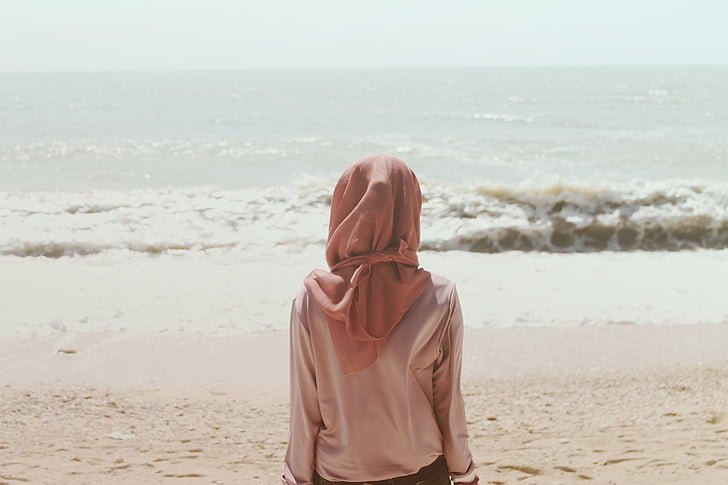Why I No Longer Wear A Hijab
Religion Unplugged believes in a diversity of well-reasoned and well-researched opinions. This piece reflects the views of the author and does not necessarily represent those of Religion Unplugged, its staff and contributors.
(OPINION) I ran into an old friend this past weekend, a reunion that is a perfect metaphor for the major life changes I have had. I was getting some work done in a small café in rural Pennsylvania when “Sandy” came up to me. After we embraced and exchanged the classic pleasantries (how are you, what are you up to now?), she finally addressed the elephant in the room: my hair.
This was the first time Sandy had seen my head without the Islamic headscarf. She was both shocked and mesmerized. Baffled and confused. We sat in awkward silence for a couple of minutes before she finally asked.
“Is this about, you know, what’s going on in Iran?”
I paused before giving a definitive answer. Although I removed my hijab over a year ago, it felt dismissive of Mahsa Amini’s memory to simply pretend that there is absolutely no connection between my unveiling and Iranian women’s ongoing struggle for freedom.
While I have always admired the bravery of Iranian women, I grew up in a community where those same women were seen as “sinners,” “wannabe Westerners” or “servants of Satan.” And no, I did not grow up in the Middle East or in some theocracy. Although I spent my formative years in the Levant, I grew up right here in the U.S. The organization my family was members of is based in Orthodox Islam, following the Shafi school of jurisprudence.
We were taught that the “awrah” (private area) for a woman is her entire body except for her hands and her face. According to my Islamic teachers, Amini was not covered properly because her hair was partially exposed. Now, would those aunties agree that she deserved to die? Probably not, but they would insist that this would all be easier if Muslim women just covered “properly.”
We were taught that the Islamic hijab is an order from God, and not a choice. I remember as a girl watching Oprah’s interview with Queen Rania of Jordan. Oprah asked her about her perspective on the matter, and she said that she believed it to be a personal choice. My grandmother and mother labeled her a “kafir,” simply because, according to them, she had belied the Quran.
Rania’s answer is common, as this is a standard answer from most moderate Muslims when addressing Western audiences. I find it to be intellectually dishonest, but that is a conversation for another day.
Originally, when Islam began, the whole purpose of the hijab was to create a clear distinction between the free-born believing women and female slaves. Enslaved women in pre-Islamic Arabia covered only the area between their knees and navel, leaving their chest bare. This naturally left them vulnerable to sexual exploitation and molestation from their masters and other men. Over the centuries this clear distinction between Muslim women (good women) and the others (bad) was baked into jurisprudence as well as cultural ideas about women and sexuality in Islamic societies. Most Muslims still tend to see the veiled woman as “pure” and therefore more deserving of respect, while an unveiled woman is seen as a “fitnah” (corruption).
The images coming out of Iran have given me so much hope for the future of not only the country but the region. Cotton and chiffon scarves set ablaze. Young women joyfully dancing in the streets unveiled. French and Italian women have shown their solidarity on social media by cutting their hair. There are those in the West who wish to write off this revolution in Iran as simply the result of economic depression and sanctions. While the economy in Iran has been suffering for a while, to say that the disdain of the headscarf began with Amini’s death would be dismissive of the decades-long protests against mandatory veiling since the early days of the theocratic regime. The mullahs were not able to fully enforce mandatory public veiling until 1981 due to the protests and pushback from Iranian women.
In recent years, the West has seen movements normalizing the headscarf, which I am not entirely opposed to. I do not believe that veiled women should be attacked or face discrimination in the workplace. However, considering its history as well as the way it is used in Islamic theocracies, I do not think the hijab could be feminist nor be truly “empowering.”
While Western feminists may support Muslim women’s right to wear the headscarf, they should remember that there are those of us who seek the liberty to remove it — both in theocratic states and in Western nations. Many of us may not be controlled by a mullah but by our families and communities.
Religion Unplugged editors know the identity of the writer, and given security concerns for expressing her opinion, are protecting the writer’s identity.

